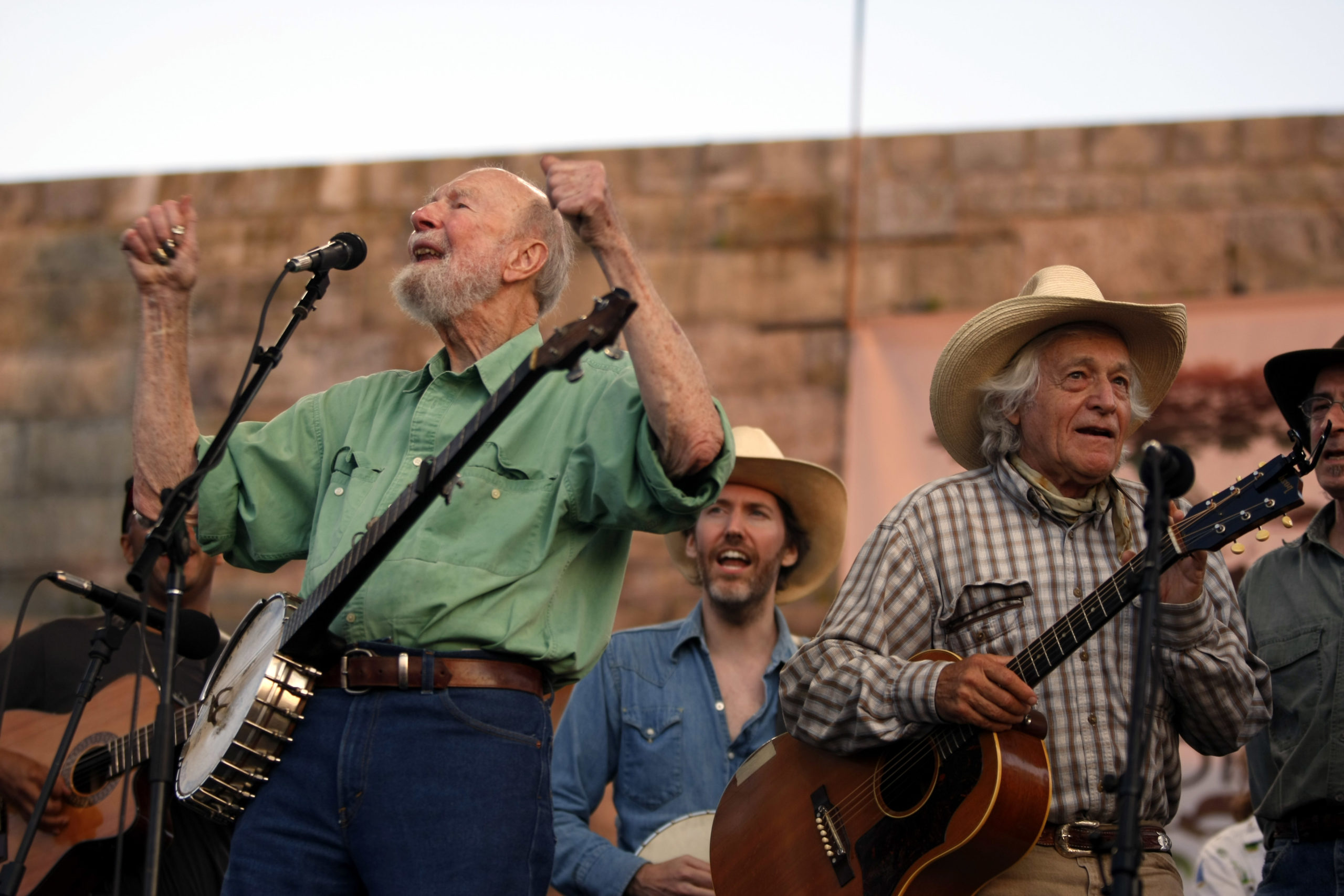Ramblin’ Jack Elliott: Brooklyn’s Ultimate Maverick

Brooklyn native Ramblin’ Jack Elliott is not only an icon of American guitarists. During a career spanning 75 years this trailblazing troubadour, the “Johnny Appleseed” of song, has been sowing the seeds of our roots music. Elliott has performed with artists ranging from his mentor Woody Guthrie to his protégé Bob Dylan, who called him “the King of the folksingers.” His versatility also encompasses cowboy, hillbilly, bluegrass, blues and rock. Accolades include two Grammys and The Presidential National Medal of Arts. Johnny Cash observed, “Nobody has covered more ground. He’s got a song and a friend for every mile behind him.” Elliott, born Elliot Charles Adnopoz in 1931, recently shared memories of his formative years in Flatbush and his experiences beyond. Indeed, these reminiscences have brought him some closure about leaving Brooklyn, terrifying his folks by running away, and leading his life by following his heart.
“Brooklyn made me want to be a cowboy. I didn’t groove well there. I wanted to be out west in wide-open spaces, riding horses and working cattle. My mother bought me my twelve-dollar Collegiate guitar when I was fourteen, before I showed interest, although I listened to Gene Autry’s Melody Ranch. At fourteen I became friends with an old Danish sailmaker who ran away from home and sailed around Cape Horn in square-rigged vessels. He owned Erickson Sails and Marine Canvas Work on Flatbush Avenue where he captivated me with his sea tales. He took me sailing with his wife on their yacht. I’ll never forget his first lesson on being a sailor. ‘Walk, don’t run. You’ll fall overboard.’” With that counsel, Elliott pursued his wanderlust.
Elliott enrolled as a freshman at Erasmus Hall High School in 1945. “In April, 1947 I ran away from home with two future beatnik poets, Don Finkel and Carl Margulies. We’d drink beer in a MacDougal Street rathskeller. I suggested we hitchhike to Chicago to hear Bunk Johnson’s band. We got a ride to New Jersey where the driver let us out. Suddenly a truck stopped. I ran to it. I was in tune with trucks by then. The driver said he was going to Wilmington, North Carolina with room for one passenger. I said to Don and Carl, ‘I’ll ride there and wait for you.’ I never saw or heard from them again.”

Brooklyn Boro
View MoreNew York City’s most populous borough, Brooklyn, is home to nearly 2.6 million residents. If Brooklyn were an independent city it would be the fourth largest city in the United States. While Brooklyn has become the epitome of ‘cool and hip’ in recent years, for those that were born here, raised families here and improved communities over the years, Brooklyn has never been ‘uncool’.